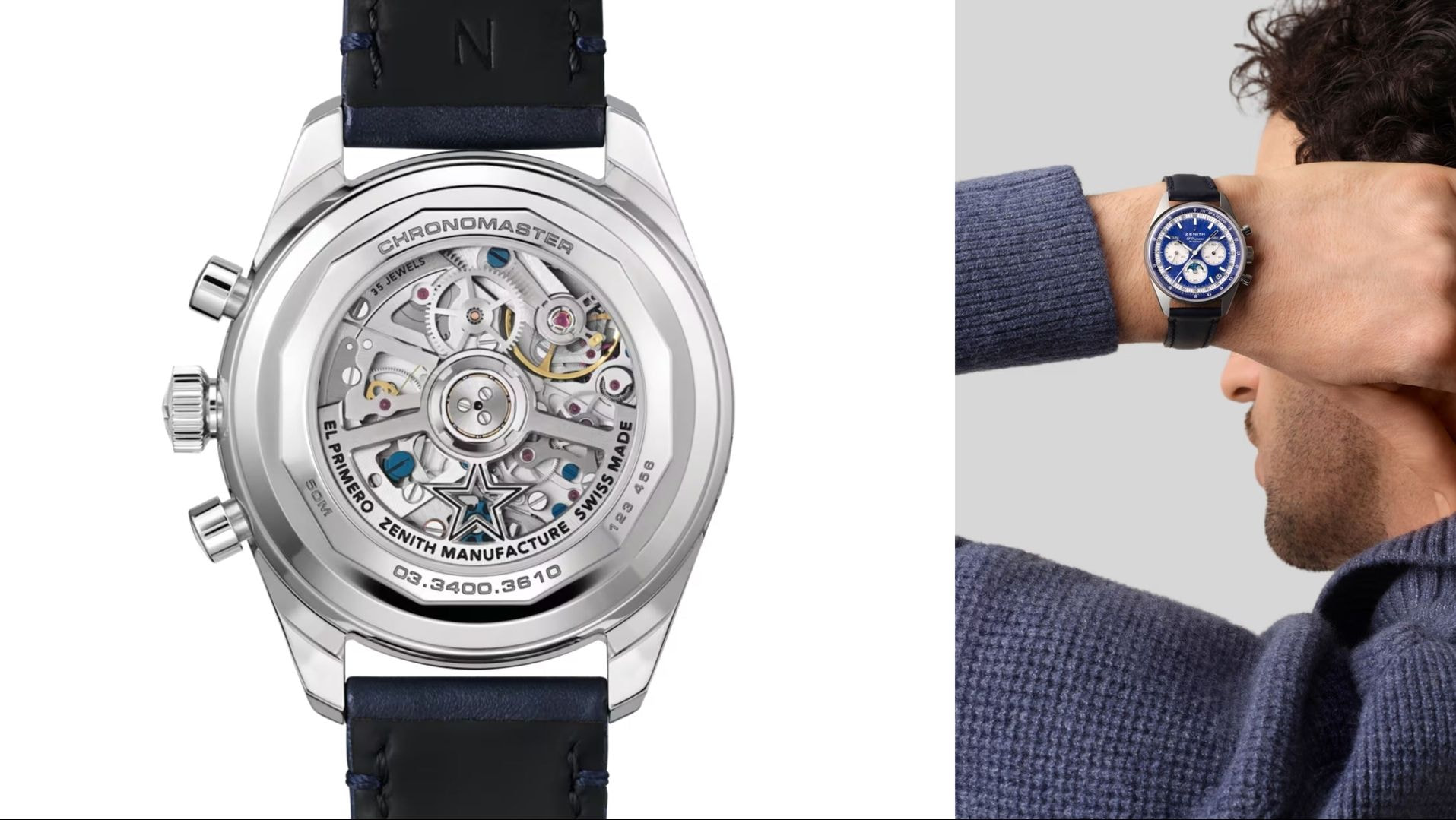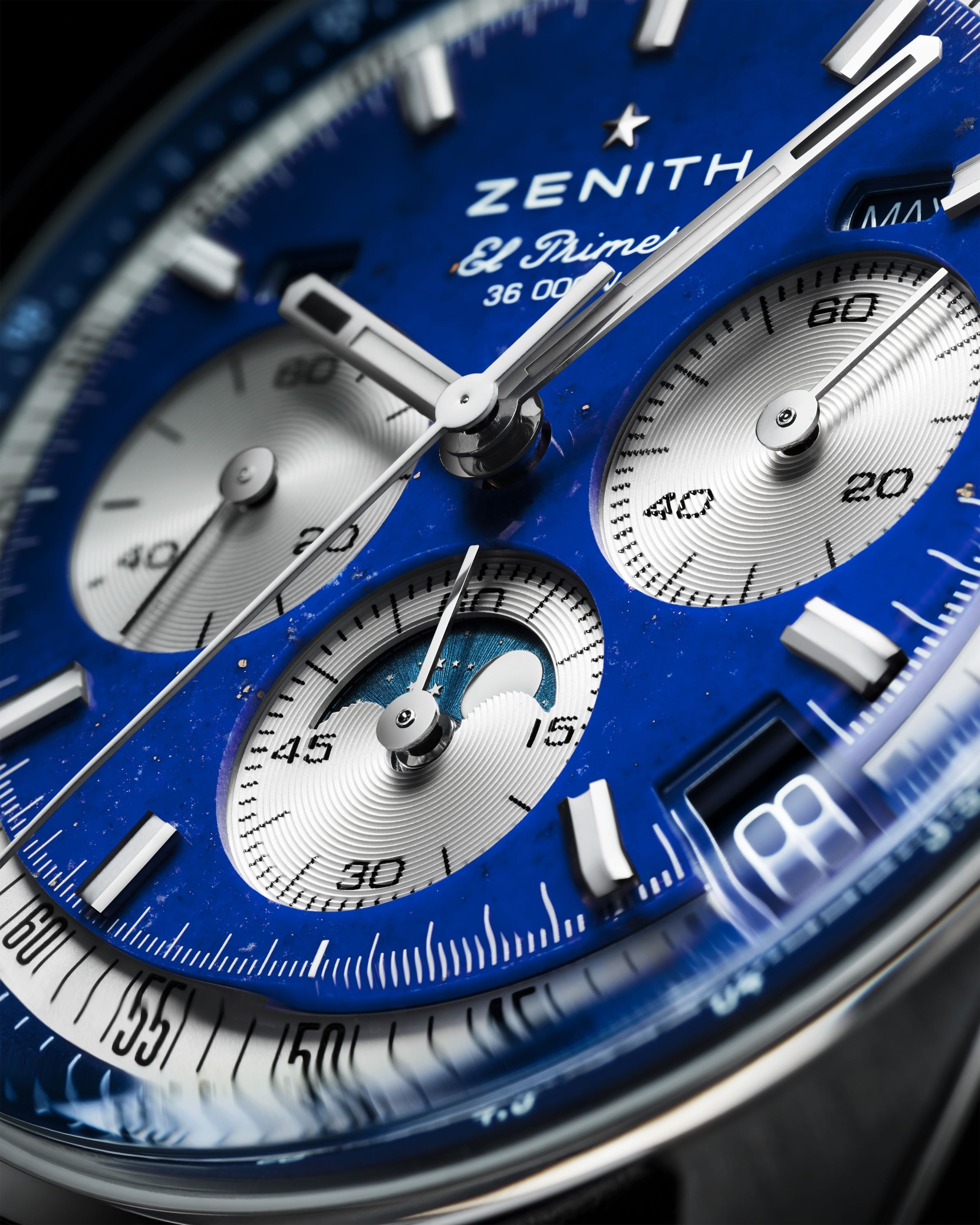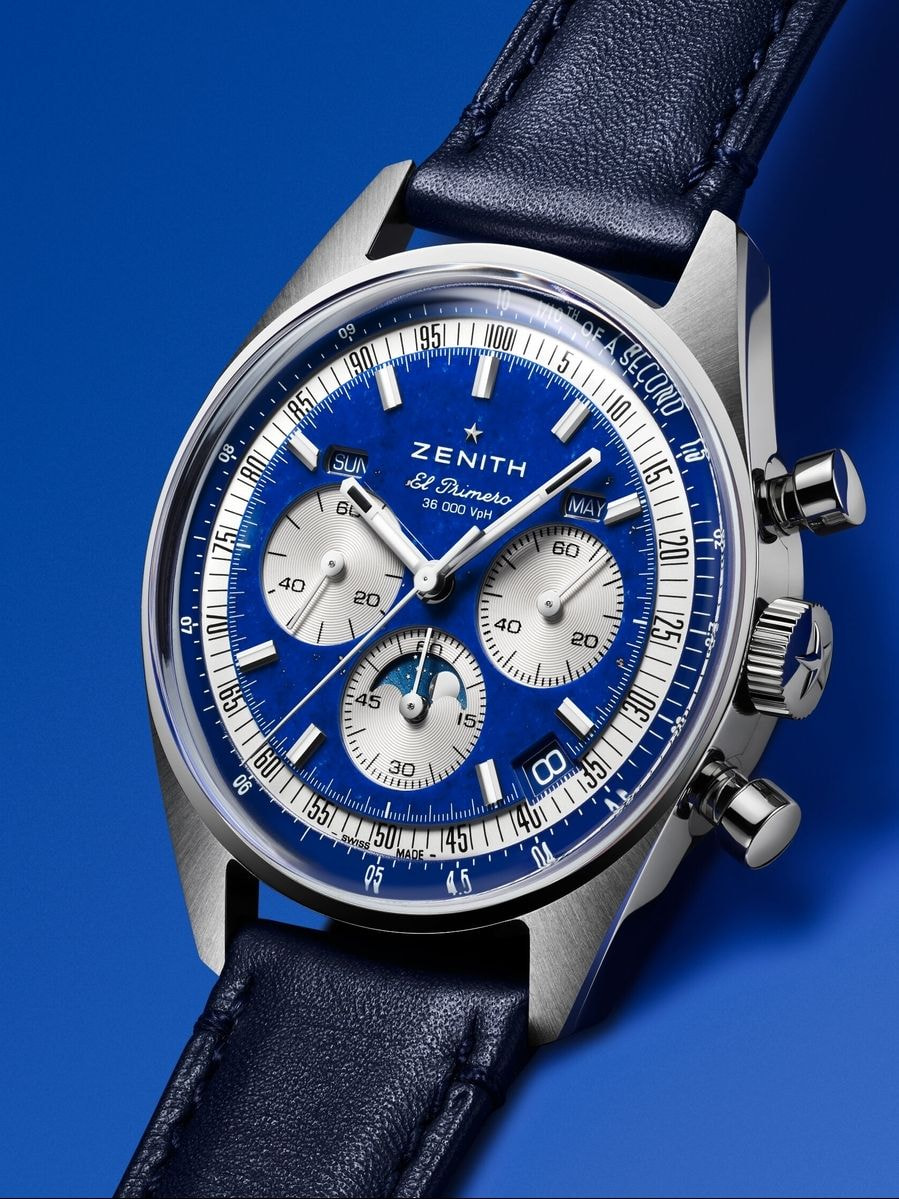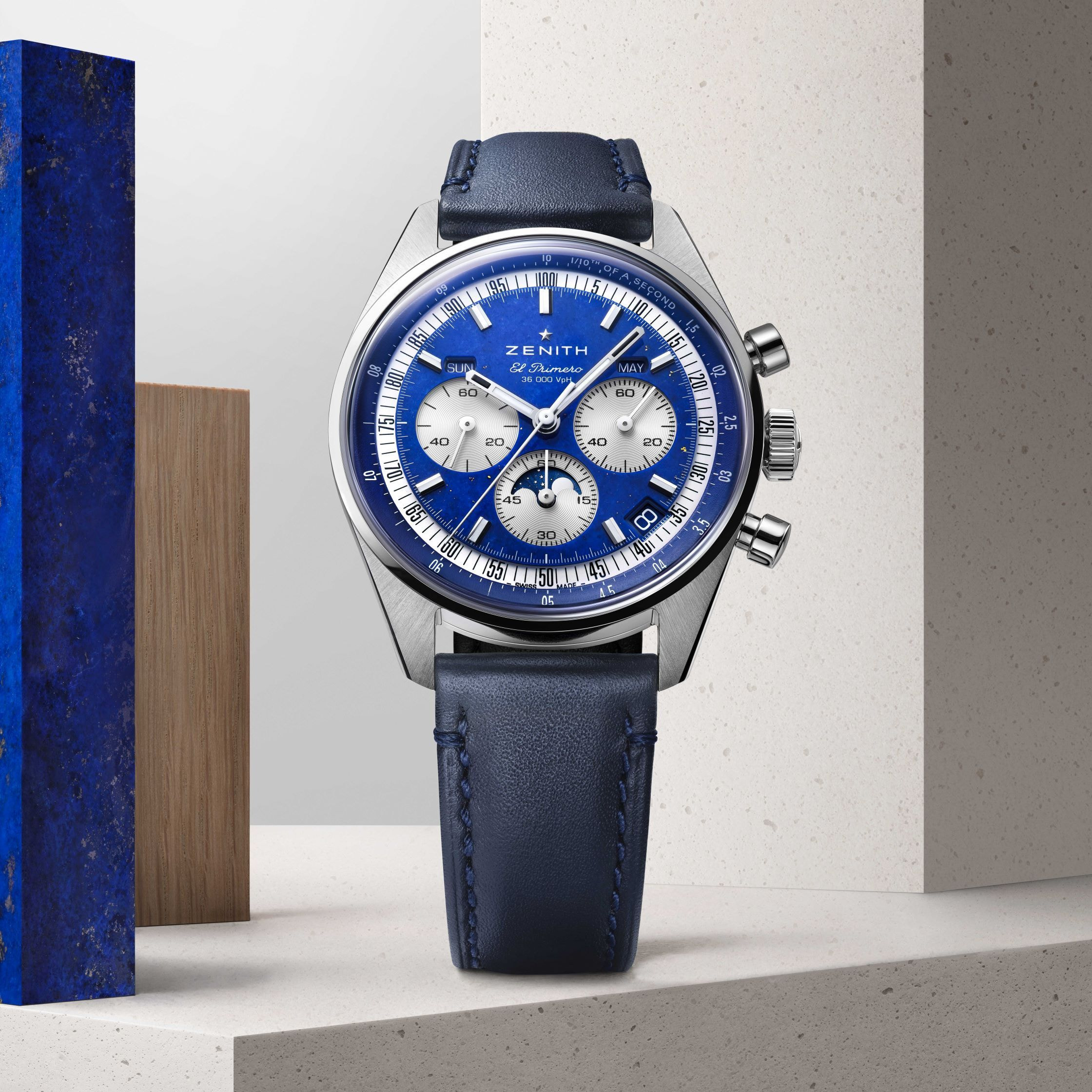22.05.2025
Zenith just made a chronograph so exquisite it should hang in The Uffizi Gallery
Discover Zenith’s Chronomaster Original Triple Calendar with a lapis lazuli dial - a masterpiece that blurs the line between horology and fine art. Swiss precision meets celestial geology in a timepiece that’s as unique as it is extravagant.

Words: Victor Goh, Watch Editor
Zenith has unveiled a new Chronomaster Original Triple Calendar featuring a natural lapis lazuli dial with golden pyrite inclusions.
Photos courtesy of Zenith.
When Swiss precision meets geological artistry, museum curators start polishing their résumés.
Some watches tell time. Others tell stories. But Zenith's latest Chronomaster Original Triple Calendar with lapis lazuli dial? It tells fortunes-specifically, that whoever buys one clearly has too much money and exquisite taste in equal measure. At RM 103,300.00, this isn't just timepiece acquisition; it's what happens when Swiss engineers get drunk on stardust and decide to build the La Primavera's little brother.
Museum curators everywhere are having an "identity crisis". Do they display this in the decorative arts wing or start a new "Things That Make Luxury Watches" section?






